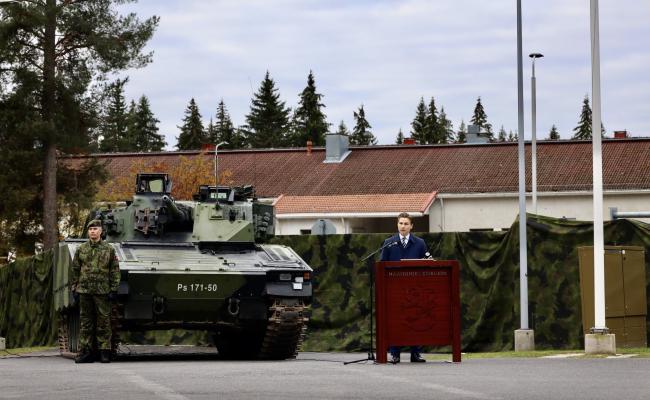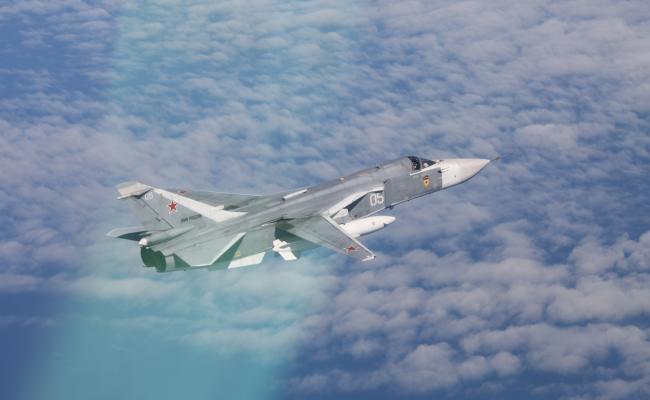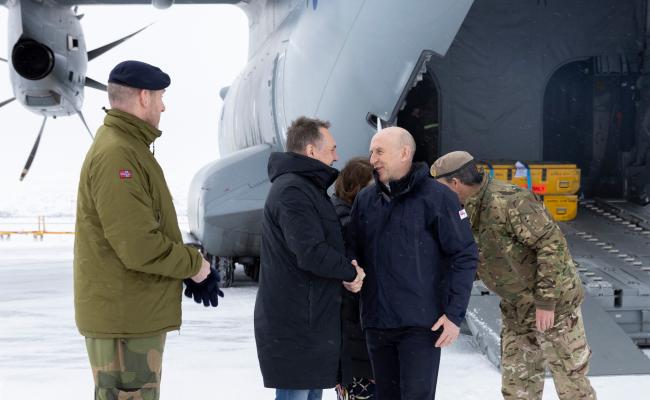Arctic Tide: British Royal Marines and Norwegian Coastal Rangers Exercised in the High North
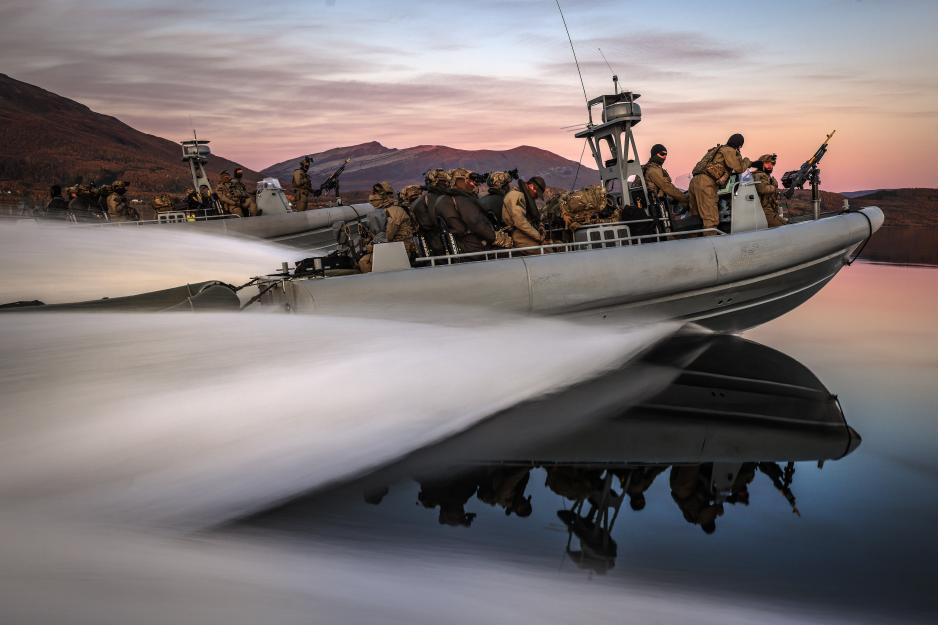
British Royal Marines in high-speed vessels during Arctic Tide exercise in Troms, Northern Norway. (Photo: Finn Stainer-Hutchins © Crown copyright 2025)
The UK and Norway recently practiced deploying, protecting, and resupplying special forces in Troms, Northern Norway, within the framework of the Joint Expeditionary Force.
The Arctic Tide exercise started at the end of September and took place until October 10th along the coast and on land in Troms county, Northern Norway.
The overall objective of the exercise was to demonstrate UK-Norway ability to deploy, protect and resupply special forces within the framework of the Joint Expeditionary Force (JEF).
JEF is a UK-led rapid reaction force that includes the Nordic and Baltic countries, as well as the Netherlands.
The British force in action in the High North included 350 people and involved Royal Marines, the crew on the landing ship RFA Lyme Bay, and personnel of the British Navy's Commando Logistic Regiment.
In collaboration with the Norwegian Armed Forces and the Coastal Ranger Command in particular, they practiced landing and protection of troops and materiel, as well as maintaining the transport of ammunition, food, and other supplies for the forces who eventually were working deep behind enemy lines.
The activity aimed to establish a foothold to pave the way for allied landing operations of greater scale.
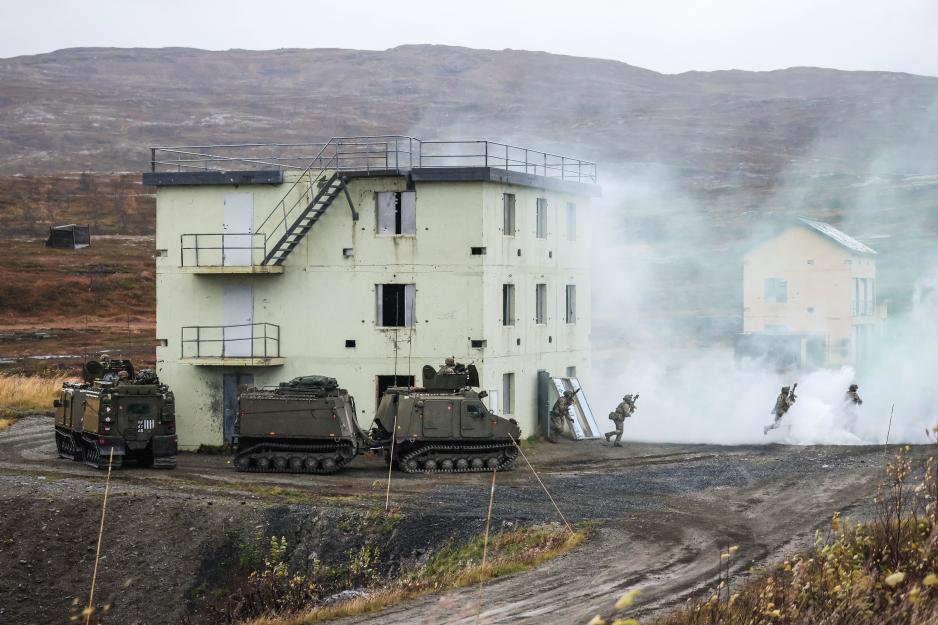
Here the British Royal Marines with Viking armoured vehicles practice neutralising enemy forces in buildings during the Arctic Tide exercise. (Photo: Finn Stainer-Hutchins © Crown copyright 2025)
Small, effective teams
"Joint Expeditionary Force partner nations have responded to rapidly developing threats by planning and exercising a wide variety of response options. Exercise Arctic Tide has rehearsed the UK Commando Force’s ability to conduct advance force and shaping operations in the High North and Arctic," says Commander of the British Amphibious Task Force, Commander Aaron Revell, and continues:
"I am especially proud of our 350 sailors, marines and soldiers, enabled by advanced and un-crewed technology, to covertly project several small but highly effective teams at long range from the sea, and sustain them for extended operations."
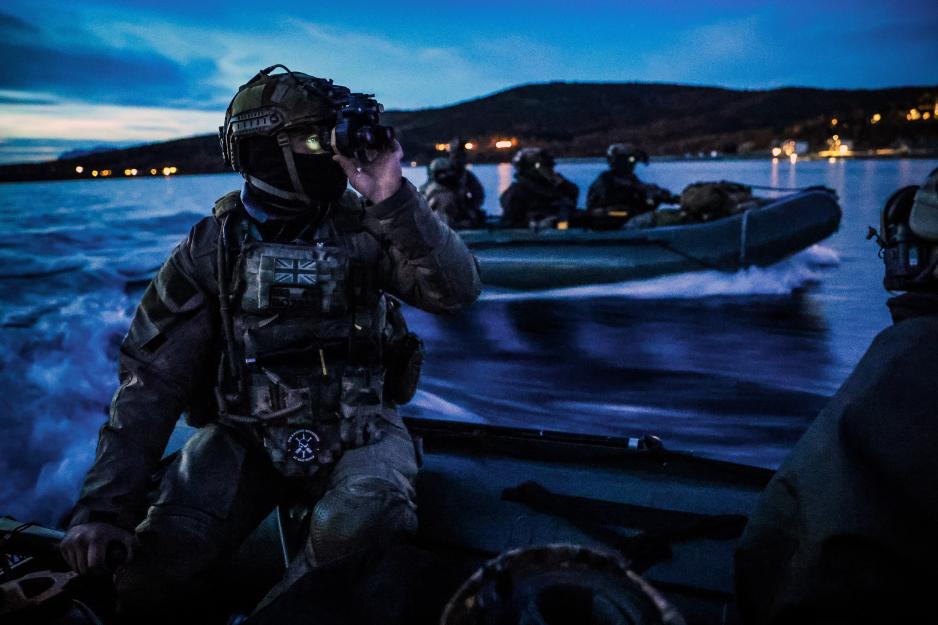
A small team of British Royal Marines practice night raids. (Photo: Finn Stainer-Hutchins © Crown copyright 2025)
Emphasis on logistics
The exercise included a particular focus on the logistical challenges of supplying forces spread across a wide mountainous area.
“The High North presents some of the harshest conditions anywhere in NATO’s area of responsibility. Limited infrastructure, long lines of communication, and a climate that degrades equipment and tests endurance," says Major Al Hewett, Second in Command of Commando Logistic Regiment.
“For advanced force units tasked with reconnaissance, strike, or enabling operations, the ability to remain supplied, repaired, and connected is what makes the difference between a fleeting presence and a credible effect,” he underlines.
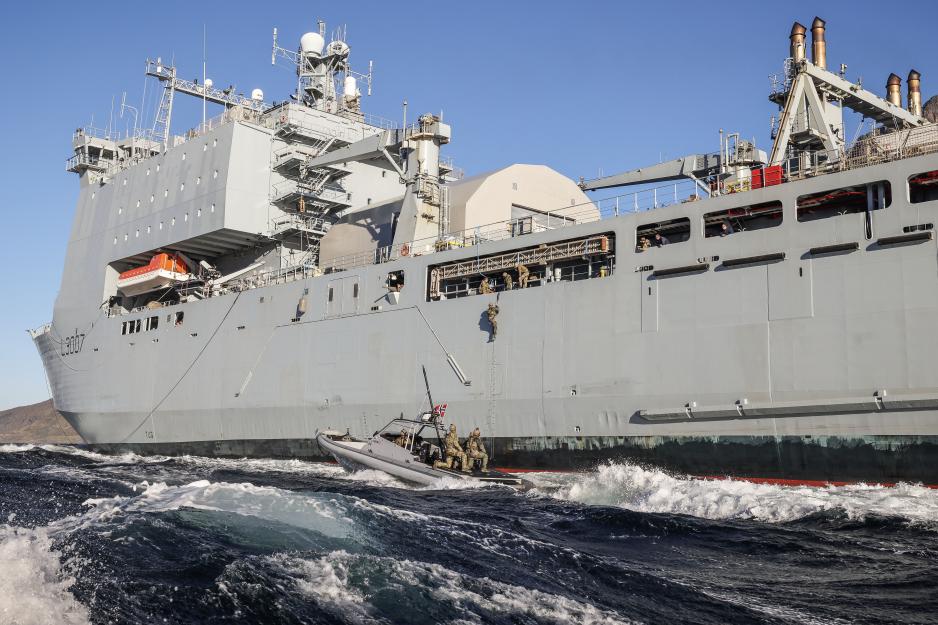
Norwegian coastal rangers board the British landing ship RFA Lyme Bay. (Photo: Alex Ceolin © Crown copyright 2025)
Overarching framework
Arctic Tide was part of JEF's overarching Tarassis series of exercises, which encompasses operations in the North Atlantic, the Nordic region, and the Baltic Sea region, with thousands of soldiers and dozens of ships and aircraft.
This is the largest exercise conducted by JEF since it was established at the NATO summit in Wales in 2014. Canadian forces are also participating in the activity, taking place until the end of October.
The main objectives of Tarassis are to demonstrate readiness and interoperability among JEF nations, refine JEF's response options, and deter malign activity in the JEF area of interest.
A central aspect is also to show in practice how JEF complements NATO's activities for deterrence and reassurance in peacetime and crises.



